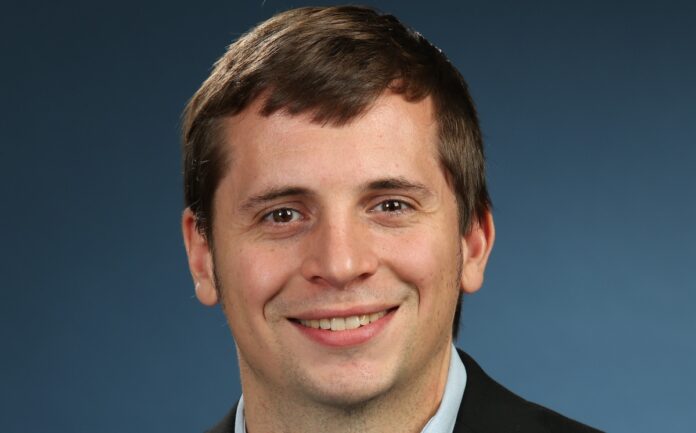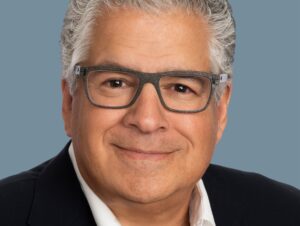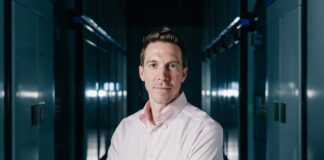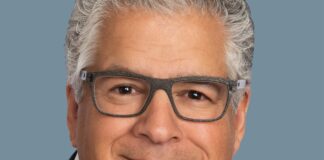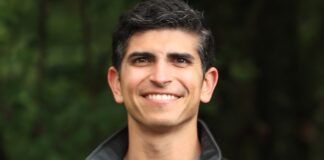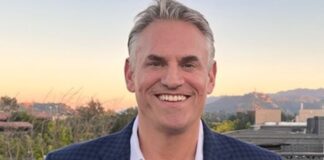GTF Connect in Los Angeles celebrated innovative sustainability efforts, with Ascend Elements proudly nominated for the Green Awards on November 14. The company’s groundbreaking Hydro-to-Cathode® technology transforms used lithium-ion batteries into decarbonized EV battery materials, reducing carbon emissions by 50% compared to traditional methods and aiming for a 90% reduction by 2030
Can you walk us through the journey of Ascend Elements from its inception to where it stands today?
What was the initial inspiration behind the company, and what were the biggest challenges you faced in the early stages? Ascend Elements is on a mission to accelerate the global transition to net zero carbon emissions. The company does this with an ultra-efficient, patented process (Hydro-to-Cathode®) to recycle lithium-ion batteries and manufacture sustainable engineered cathode precursor (pCAM) and cathode active material (CAM) to power a new generation of cleaner electric vehicles. The Hydro-to-Cathode recycling and cathode manufacturing process can reduce carbon emissions by up to 90% compared to traditional methods.
Ascend’s recycling technology recovers 98% of the critical metals in used lithium-ion batteries and will offset the need for mining. Ascend Elements was founded in 2015, but work on the company’s core technology began at Worcester Polytechnic Institute in 2011. Co-founders Prof. Yan Wang and Dr. Eric Gratz started developing the Hydro-to-Cathode® direct precursor synthesis process in 2011 and filed the first patents on this technology in 2012. As background, the company was originally founded as Battery Resourcers, but changed its name to Ascend Elements in January 2022. From the beginning, the founders wanted to commercialize a more efficient and economical way to return used battery cathode materials back to the battery supply chain.
Ascend Elements’ Hydro-to-Cathode® technology is a major innovation in battery recycling. Could you explain how it works and why it is a game-changer in producing EV battery materials?
We invented a new way to recycle lithium-ion batteries and produce new, sustainable cathode precursor and cathode active material. Our process is called Hydro-to-Cathode® direct precursor synthesis. It’s an innovative, patented process that eliminates many steps in the traditional cathode manufacturing process.Hydro-to-Cathode® is an elegant, purpose-built solution for battery recycling and cathode manufacturing.The process was invented at Worcester Polytechnic Institute in Massachusetts and our first patents were filed in 2012. Instead of extracting individual metals from used battery materials, we can extract the impurities and leave the critical metals in a liquid solution. From there, we adjust the elemental composition of the material to the desired specifications and precipitate new cathode material. Our process eliminates up to 15 steps in the traditional cathode manufacturing process.
Reducing carbon emissions in EV production is a crucial goal for the industry. Could you share how Ascend Elements’ processes help achieve a 50% reduction in carbon emissions compared to traditional methods?
By using recycled battery materials as our feedstock and using the ultra-efficient Hydro-to-Cathode® process, we can significantly reduce the carbon emissions associated with electric vehicle battery manufacturing. We recently commissioned an independent life cycle assessment (LCA) of our NMC 622 cathode active material (CAM) made with recycled battery materials. We found that our current cathode manufacturing process results in 49% lower carbon emissions compared to manufacturing the same cathode material in the traditional way with primary material from mining. That’s good, but we have plans to further decarbonize our process to achieve a 90% reduction in carbon emissions by 2030. Instead of extracting the critical battery metals (nickel, cobalt and manganese) one by one, we extract impurities like aluminum, copper, plastics and graphite.
You’ve set an ambitious goal to reduce carbon emissions by 90% by 2030. What are the main steps and technological improvements that will help you reach this target?
The primary levers to further decarbonize the Hydro-to-Cathode® direct precursor synthesis process are the use of 100% renewable energy in our recycling and manufacturing facilities, use of rail to transport materials, and use of responsibly sourced lithium carbonate (Li²CO³). By adjusting these levers, we aim to further reduce carbon emissions by up to 90% compared to production of primary materials from mining. As we move forward on our decarbonization path, the Hydro-to-Cathode® process will emit carbon dioxide from processing (44%), raw materials (41%) and transport (15%).
Sourcing enough lithium-ion batteries and manufacturing scrap must be essential to your operations. What are the main challenges in this sourcing process, and how does Ascend Elements manage them?
Ascend Elements is helping to prepare for the tsunami of retired and end-of-life EV batteries that is expected in the coming decade. By 2034, analysts expect there will be more than 1 million tons of used batteries to recycle each year in the United States and Europe. But until those end of life batteries need to be recycled, there are always warranty returns, recalls and damaged batteries that need recycling now. Additionally, the largest source of battery material for recycling today is gigafactory manufacturing scrap. When new batteries are manufactured, a small amount of scrap is always produced. This scrap material adds up to a significant amount of material to be recycled each year.
Many consumers still hold misconceptions about the environmental impact of EVs. How do you address these misconceptions, and what role does Ascend Elements play in making EVs more sustainable and truly “green”?
It’s true that manufacturing an electric vehicle produces more carbon emissions than manufacturing a similarly sized internal combustion engine (ICE) vehicle. However, once the cars are driven off the assembly line, the electric vehicle can stop producing new carbon emissions (if it is powered by clean, renewable energy source.) An ICE vehicle that burns fossil fuels will continue adding to its carbon footprint as the vehicle is driven. The use of sustainable recycled battery material in new electric vehicle batteries will significantly reduce the carbon footprint of new electric vehicles.
In terms of quality and performance, how do your recycled cathode materials compare to those made with virgin materials? Do your customers see any performance or cost differences? Several peer-reviewed studies have shown Ascend Elements’ recycled battery materials perform as well as similar materials made from virgin (or mined) sources. There’s no performance penalty for use of recycled materials in a lithium-ion battery. This independent research has been instrumental in alleviating automotive industry concerns about the use and performance of recycled battery materials.
The EV industry is booming, but it’s also very competitive and fast-changing. How does Ascend Elements stay at the forefront of innovation, and what trends are you seeing that will shape the future of battery recycling?
Ascend Elements was founded on innovation with its first patent issued in 2012. The company has continued innovating new solutions and more efficient processes ever since then. Today the company has more than 120 patents pending and granted. The company’s founding technology, Hydro-to-Cathode® direct precursor synthesis, was developed at Worcester Polytechnic Institute (WPI) in Massachusetts. It is the most efficient and economical way to return used batteries and scrap to the domestic supply chain. As a result, we can produce new pCAM more economically than anyone outside China. Innovation is the only way to compete with China’s dominance in the EV battery industry.
What role does renewable energy play in Ascend Elements’ operations, and how are you working to increase its use within your production processes?
Our decarbonization plans rely on extensive use of renewable energy. Our facilities in Georgia and Kentucky are powered by a combination of hydroelectric power and solar.
As you expand, what regions and markets are you focusing on?
Are there specific areas where you see a strong demand for sustainable battery materials? Based in Westborough, Mass., Ascend Elements has domestic operations in Georgia, Kentucky, Michigan and Massachusetts. The company recently expanded into Europe with a joint venture facility in Poland. Working with Elemental Strategic Metals in Poland as AE Elemental JV, we plan to operate recycling facilities in both Poland and Germany. The European electric vehicle market is more mature than in the United States and regulations are favorable to battery recycling. Expanding into Europe will allow us to better service our customers locally and help the industry comply with new EU rules requiring recycled material in new batteries.
Funding and partnerships are critical in scaling up an operation like yours. How has Ascend Elements secured its position financially, and what role do collaborations play in your growth strategy?
Ascend Elements is funded by a variety of strategic investors and venture capital. Major investors include Jaguar Land Rover, Fifth Wall, Just Climate, Decarbonization Partners, Temasek, TDK Ventures and many others. We have also received funding from the U.S. Department of Energy. We have had close collaborations with Orbia’s Koura Global and Freudenberg e-Power Systems on various projects. In 2023, we signed a $1B contract with a major customer to produce sustainable pCAM for an electric vehicle battery application. Commercial agreements like this require significant collaboration as we make a custom-engineered product for each customer.
What regulatory or policy challenges do you face in scaling your operations globally, and how do you navigate these hurdles?
Regulations in the European Union are favorable to battery recycling and the recycled battery materials industry. By 2031, 70% of batteries in the EU will need to be recycled and recycling services must reach an efficiency of at least 70%. Additionally, under the new EU rules, all new cells must contain minimum levels of recycled content (16% for Co, 6% for Ni and 6% for Li). These regulations are creating demand for recycling services and recycled products in Europe. In the United States, the Inflation Reduction Act (IRA) provides incentives for EV manufacturers to use recycled battery materials in new vehicles. However, the future of this EV tax credit is unclear with the new Trump administration. President-elect Trump has suggested increased tariffs on Chinese battery products, which would likely increase demand for U.S. made and recycled battery materials.
Looking forward, what are Ascend Elements’ most exciting milestones or projects in the pipeline that you believe will significantly impact the EV and battery recycling industries?
In 2025, we will begin production of sustainable pCAM at a commercial scale at our Apex 1 facility in Hopkinsville, Kentucky. This plant will be North America’s first and only domestic source of NMC pCAM material. We already have customers lined up for shipments of our sustainable pCAM material and they plan to use the material in electric vehicles beginning in 2026.
Finally, for aspiring entrepreneurs in the clean tech space, what advice would you offer, especially around innovation, perseverance, and environmental responsibility?
Clean tech entrepreneurs need to keep the fundamentals of business and supply and demand in mind. A good business model is essential. Green investors are still investors and they expect a return on their investment. Your business model must work on its own without reliance on governmental interventions, tax breaks or green subsidies.
Picture: Eric Gratz @Ascend Elements
Thank you Eric Gratz for the Interview
Statements of the author and the interviewee do not necessarily represent the editors and the publisher opinion again.


